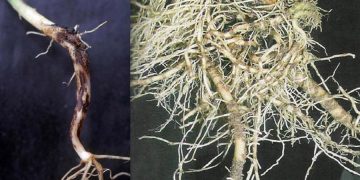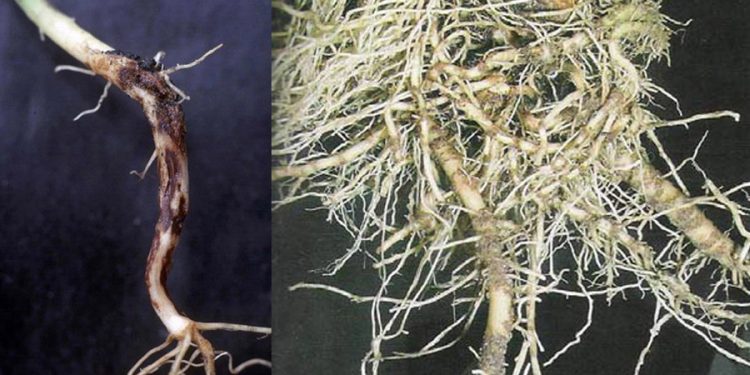#Rhizoctonia #FungalPathogen #CropYield #IntegratedPestManagement #SoilManagement #Agriculture
Rhizoctonia solani is a soil-borne fungal pathogen that affects numerous crops worldwide. The fungus is known for causing stem and root rot, which can significantly reduce crop yield and quality. Understanding the development and consequences of Rhizoctonia solani is crucial for implementing effective management strategies.
The development of Rhizoctonia solani occurs in four distinct phases: infection, colonization, growth, and reproduction. The pathogen enters the plant through wounds or natural openings and colonizes the roots or stem. It then grows within the plant tissues, causing damage and eventually leading to the plant’s death. The fungus can survive in the soil for several years, making crop rotation and other management strategies necessary to control its spread.
The consequences of Rhizoctonia solani can be devastating to agricultural production. The pathogen is known to affect a wide range of crops, including wheat, rice, potato, and soybean. Stem and root rot caused by the fungus can result in significant yield losses and reduced crop quality. In severe cases, it can lead to complete crop failure.
To manage Rhizoctonia solani, it is essential to implement integrated pest management strategies, including crop rotation, use of resistant cultivars, and fungicide application. Proper soil management practices, such as minimizing soil compaction and promoting soil health, can also help prevent the spread of the fungus.
Understanding the development and consequences of Rhizoctonia solani is crucial for effective management of the fungal pathogen. Implementing integrated pest management strategies can help reduce the spread and impact of the pathogen on agricultural production.


































